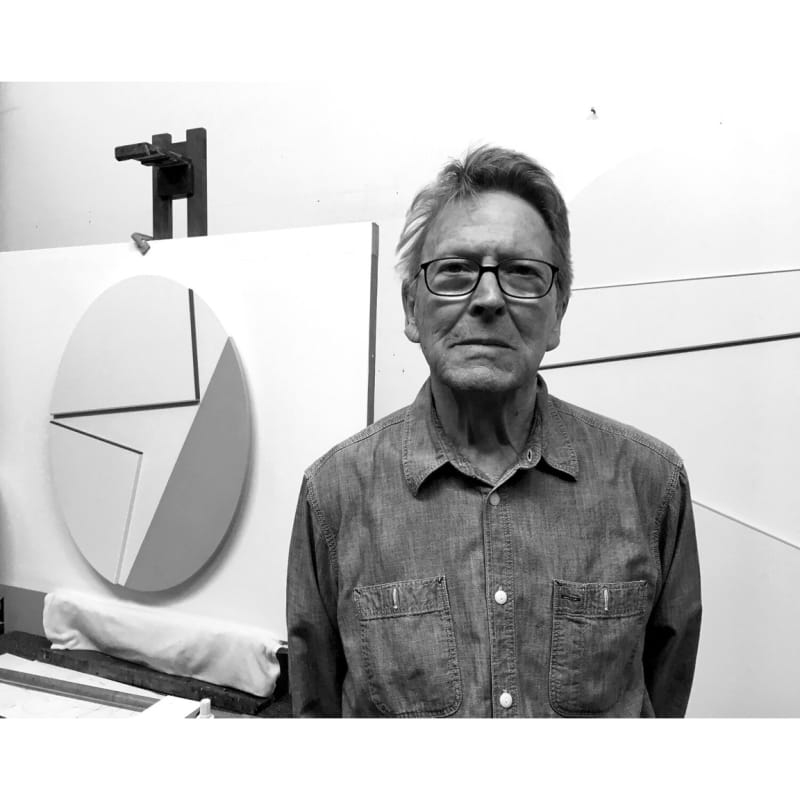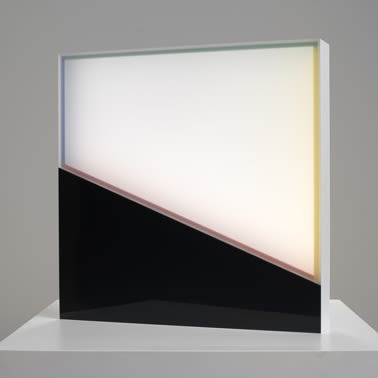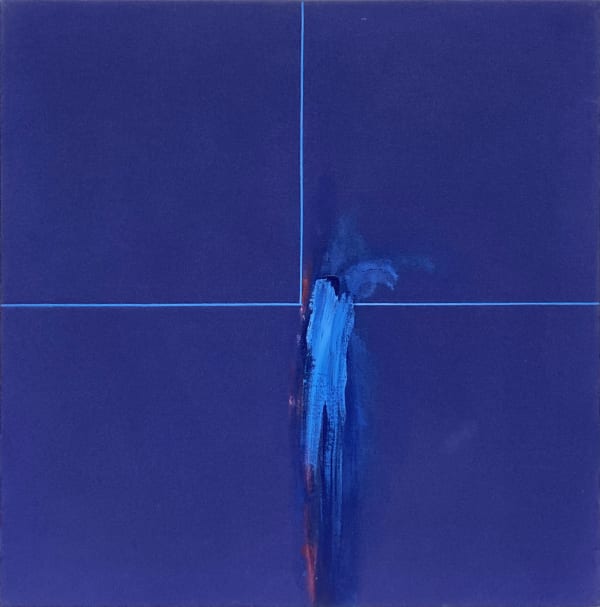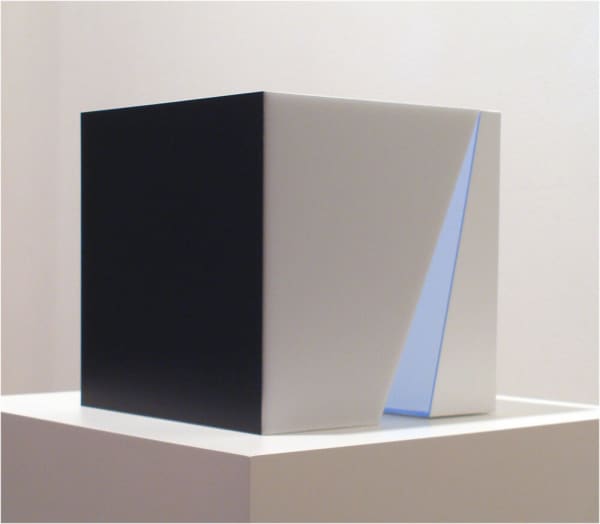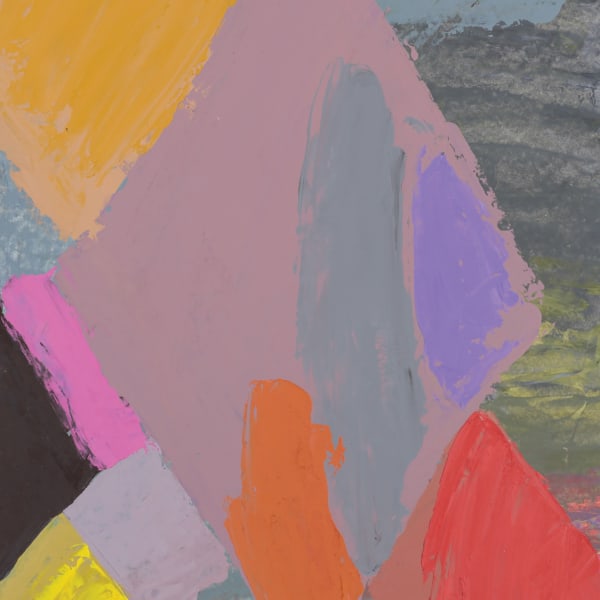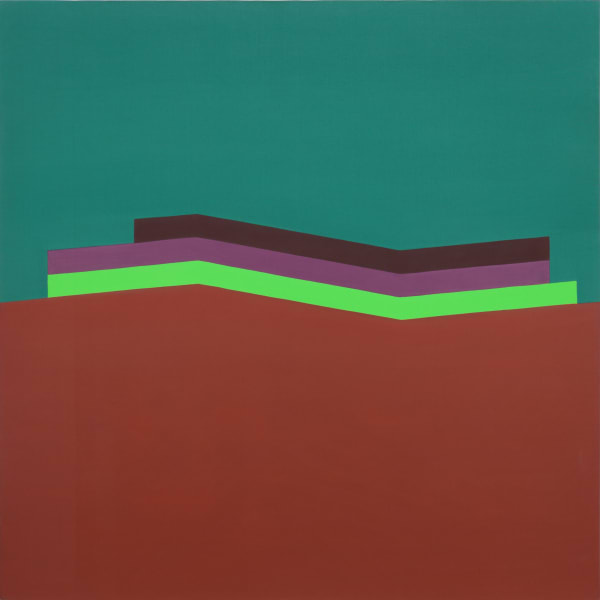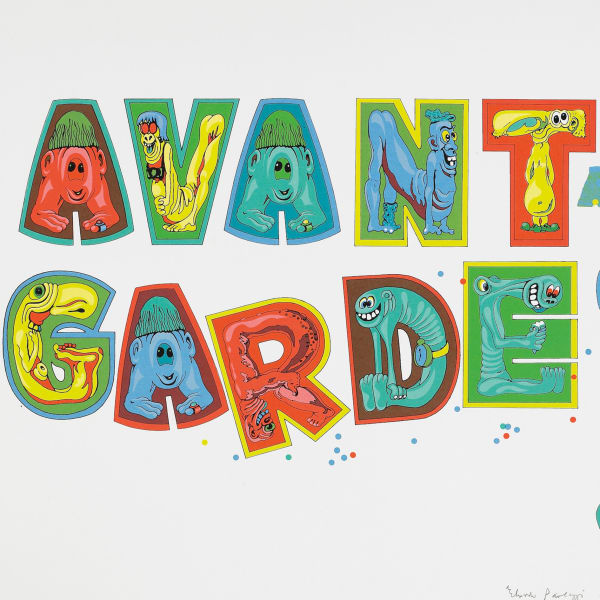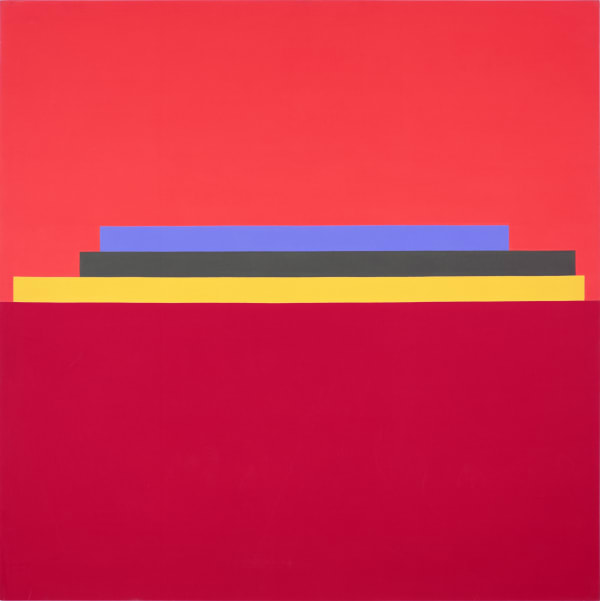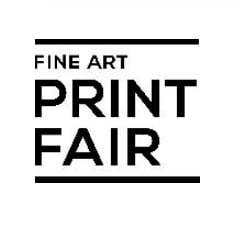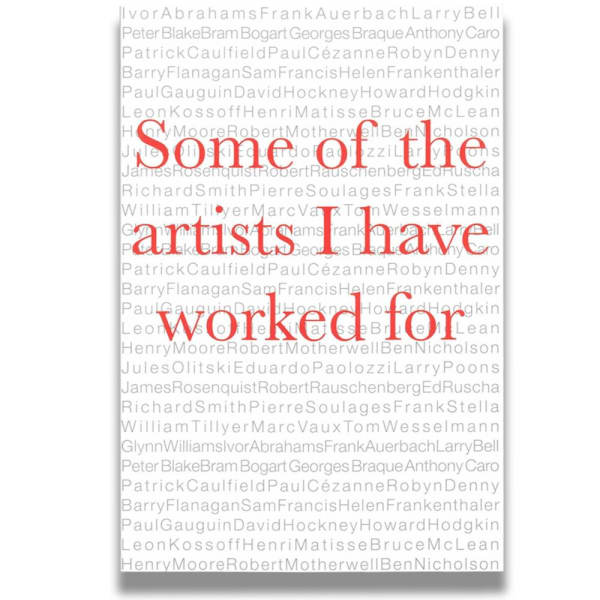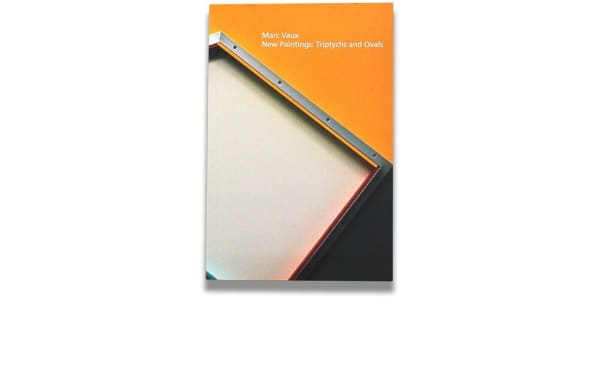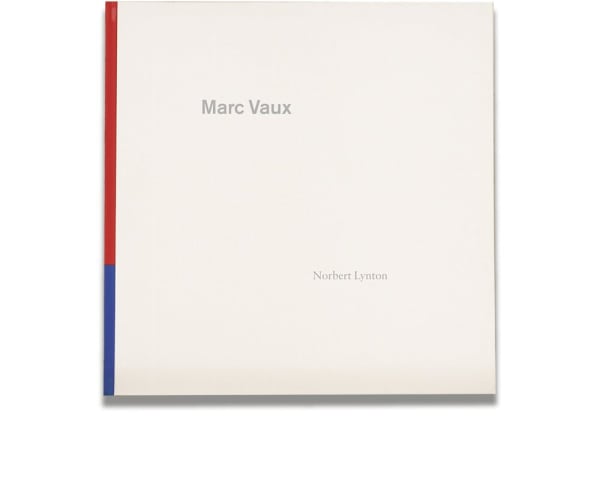Marc Vaux
-
Biography
Born in Swindon in 1932, Marc Vaux is a British artist who rose to prominence in the 1960s. As a non-objective painter, Vaux explores a range of different materials, including drawing, painting, and sculptural reliefs. Mass-produced anodized aluminium, MDF boards, and commercial cellulose spray paints are among the materials he has used in recent work, which is variously described as Minimalist and Constructivist and centres on elemental, hard-edged geometry. Vaux's primary concerns include the effects of colour as light; formal contrasts such as hard and soft shapes; gesture and structure; and closed and open spaces. His work was included in the seminal Situation exhibition of 1960 alongside Robyn Denny, William Turnbull, and Bernard Cohen among others. This exhibition was a direct reaction by British abstract artists to the preceding exhibitions in London of the American Abstract Expressionists - in particular, Tate Gallery's 1959 exhibition The New American Painting, as Shown in Eight European Countries, 1958-1959. Since then, Vaux has continually developed his non-figurative painting style through a range of media - from drawing and painting to three-dimensional reliefs and sculpture. Vaux's work has variously been described as Minimalist and Constructivist, although since his primary interest is in colour and light, he has more in common with the American West Coast artists than the New York Minimalists.
-
Works
-
 Marc VauxLight Form 255.130, 2008Acrylic
Marc VauxLight Form 255.130, 2008Acrylic -
 Marc VauxTrace, 1963Acrylic on canvas
Marc VauxTrace, 1963Acrylic on canvas -
 Marc VauxCourt Green, 2019Acrylic on MDF
Marc VauxCourt Green, 2019Acrylic on MDF -
 Marc VauxLemon Light, 2019Acrylic on MDF
Marc VauxLemon Light, 2019Acrylic on MDF -
 Marc VauxLight Cube (Blue), 2006Acrylic sculpture
Marc VauxLight Cube (Blue), 2006Acrylic sculpture -
 Marc VauxLight Cube (Yellow), 2006Acrylic sculpture
Marc VauxLight Cube (Yellow), 2006Acrylic sculpture -
 Marc VauxUntitled (Blue), 1971Screenprint on paper
Marc VauxUntitled (Blue), 1971Screenprint on paper -
 Marc VauxUntitled (Red), 1971Screenprint on paper
Marc VauxUntitled (Red), 1971Screenprint on paper
-
-
Exhibitions
-

Denny, Hoyland, Smith, Vaux: On Paper
2 February - 5 March 2022Bernard Jacobson Gallery presents Denny, Hoyland, Smith, Vaux: On Paper, an exhibition of works by Modern British icons Robyn Denny, John Hoyland, Richard Smith and Marc Vaux. Departing from the... -

Bruce McLean, William Tillyer, Marc Vaux: New Works
London Gallery Weekend 4 June - 2 July 2021Bernard Jacobson Gallery is pleased to announce a new exhibition of recent works by Bruce McLean, William Tillyer, and Marc Vaux. -

Prints I published
12 February - 9 March 2019In 1969 Bernard Jacobson began his career as an art dealer, selling and publishing prints by important contemporary artists from a small fourth-floor gallery in London’s Mayfair. For a gallery... -

Some of the artists I have worked for
10 September - 5 October 2019To end the celebrations of the 50th anniversary of the gallery, we are delighted to introduce a selection of works by the artists that helped shaping its success. -

Marc Vaux: New Paintings
22 November 2019 - 11 January 2020 -

Marc Vaux: The Edge and Beyond
17 November - 21 December 2017Bernard Jacobson Gallery is proud to announce Marc Vaux: The Edge and Beyond, an exhibition spanning more than four decades of experimental work by the renowned British artist. The exhibition... -

Caro, Denny, Smith, Vaux
2 February - 4 March 2017Bernard Jacobson Gallery is delighted to present its upcoming exhibition Caro, Denny, Smith, Vaux, including works by gallery artists Anthony Caro, Robyn Denny, Richard Smith, and Marc Vaux. The show... -

Marc Vaux: New Ovals
2 - 31 May 2014Bernard Jacobson Gallery is pleased to announce the opening of the exhibition Marc Vaux: New Ovals, a collection of new works by the renowned British artist. The current exhibition focuses... -

Marc Vaux: Full House, Paintings from 1964
15 November - 21 December 2012Bernard Jacobson Gallery is proud to announce Marc Vaux: Full House, Paintings from 1964 by the renowned British artist on the occasion of his eightieth birthday. -

Marc Vaux, New Paintings: Triptychs and Ovals
19 November 2010 - 5 February 2011Bernard Jacobson Gallery is proud to announce Marc Vaux, New Paintings: Triptychs and Ovals by the renowned British artist. -

Marc Vaux: Colour Edge to Edge, Paintings from the mid '60s
4 May - 2 June 2007In the mid-1960s Marc Vaux became aware that his primary interest in painting was colour in its purest sense. Prior to this point, his work had been predominantly concerned with... -

The 70s: Explosion of Colours
Online Exhibition 28 April - 30 May 2020 -

Mixed Show
10 - 30 November 2022Bernard Jacobson Gallery presents a mixed show of gallery artists. Artists include Ivor Abrahams, Georges Braque, Paul Cézanne, Robyn Denny, Sam Francis, John Hoyland, Henri Matisse, Bruce McLean, Henry Moore,... -

Marc Vaux at 90: A Survey
7 December 2022 - 28 January 2023In celebration of Marc Vaux’s 90th birthday, Bernard Jacobson Gallery presents a survey of works from the 1960s to the present day.
-
-
Art Fairs
-
Publications
-

Some of the artists I have worked for
Published on occasion of the homonymous exhibition held at Bernard Jacobson Gallery, London, 10 September - 5 October 2019 -

Marc Vaux, New Paintings: Triptychs and Ovals
67 pages 28 colour plates Biography -

Marc Vaux
In this monographic publication, art critic Norbert Lynton gives the reader a walk through Marc Vaux’s formative years at the Slade, as part of the 1960s London booming art scene,...
-

